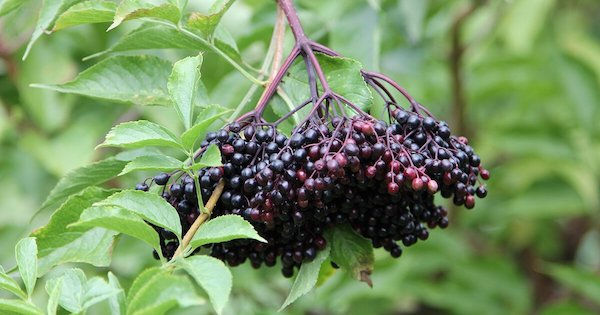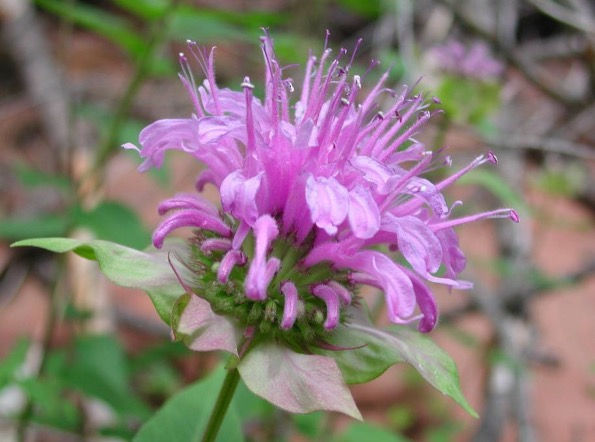Elderberry: The People’s Medicine Chest
- Jodi McKee
- Mar 17, 2024
- 4 min read
Updated: Jul 23
If herbs had personalities, elder would be your wise but slightly quirky village grandma — the one who has a tincture for everything, a twinkle in her eye, and stories you’re not entirely sure are made up.
Elder has earned its title as “the medicine chest of the country people,” and for good reason. It has been revered for thousands of years, recommended by Hippocrates in the 4th century BCE, and remains one of the most sought-after remedies in modern herbal medicine.
Whether you’re dealing with colds, flu, sinus congestion, or just looking to give your immune system a boost, elderflower and elderberry are true herbal allies that deliver gracefully and with just a little old-school flair.
But first the science stuff....
(Sambucus nigra)
Common Name
Elder, black elder, blue elderberry, bore tree, bourtree, common elder, elderberry, elkhorn, sweet elder.
Family
Adoxaceae (formerly Caprifoliaceae)
Botanical Description
Elder tree grows from 10 to 30 feet tall with compound leaves comprised of 5-11 serrated oblong leaflets and an extra leaflet on top. The leaves grow opposite each other along the stem, which is hollow and has a pithy core. The flowers are white and arranged in flat, panicle-like clusters. The fruit is flat or slightly rounded, branching clusters of glossy, dark purple or black berries that appear in late autumn.

Harvesting Elder Like a Respectful Forager
Let’s start in the field. Or your backyard. Or along a sun-dappled fence line where elder loves to grow wild and free.
Elderflowers: Gently pluck the creamy white flower clusters from the base of the stalk — just a few per tree, please! We’re not greedy. The more flowers you leave, the more berries you’ll have later.
Elderberries: Wait until they’re fully ripe and gloriously dark purple (green = nope). Snip the berry clusters and then remove the berries from the stems before using.
Note: Elder bark is a traditional medicine too, but it can be toxic if prepared incorrectly. Unless you're trained in old-world bark sorcery, leave that to an experienced herbalist.
Elderflower vs. Elderberry: What's the Difference?
Think of them as siblings with similar talents but different specialties.
Elderflower
Rich in vitamin C, flavonoids, mucilage, tannins, and essential oils
Supports fevers, sinus infections, allergies, and colds
Promotes sweating (aka: diaphoretic), making it great during the early stages of a fever
Anti-inflammatory, anti-catarrhal, and an expectorant — aka, it gets mucus moving and calms irritated tissue
Bonus: a gentle nervine, perfect for calming the nervous system during stress or illness
Elderberry
Packed with vitamins A & C, antioxidants, and iron
Known for antiviral activity, especially against colds and flu
Strengthens cell walls, interferes with viral replication, and helps the body recover faster
A go-to syrup in every home herbalist’s fridge during flu season
Together, they’re a dynamic duo that can tackle everything from the sniffles to stress.
What the Research Says (a.k.a. Science Is Finally Catching Up)
Elderberry hasn’t just been tossed into cordials and grandma’s teacups — it’s been clinically studied, and the results are impressive:
In one double-blind, placebo-controlled study, 93.3% of participants taking elderberry syrup improved in just two days, compared to six days in the placebo group.
An in vitro study found that elderberry flavonoids bind to H1N1 flu viruses, preventing them from infecting cells — yes, it literally blocks viruses from crashing your immune system.
Reviews of elder-based formulas show reduced nasal congestion, headache, sinus swelling, and even improved drainage.
Basically, elderberry shows up and shows out, with both folklore and lab coats backing it.
Not Just for Flu: Other Elder Awesomeness
For Inflammation
The rich anthocyanins (the pigments that give elderberries their purple-black hue) are natural inflammation tamers.
Elder has been used traditionally for:
Arthritis
Gout
Rheumatism
Even gingivitis — because gum inflammation counts too!
For Skin & Wound Healing
The leaves, used externally as an infused oil or poultice, are vulnerary (tissue-healing) and astringent. Native American herbalists used them for bruises, sprains, and sores. Modern herbalists still do.
For Nerves
Elderflowers aren’t just for sinus drainage — they’re gentle nervines that soothe frazzled systems. Sip a warm elderflower tea on a stressful day and feel your shoulders come down from your ears.
How to Use Elder (and When to Use What)
Elderflower Tea
How: 1–2 teaspoons dried flowers per cup of boiling water
When: Steep 10–15 minutes, sip 2–3x daily
Why: Great during the early stages of fever, colds, allergies, and stress
Elderberry Syrup
How: 2–3 teaspoons, 3–4x per day at the first sign of illness
Why: Supports the immune system and shortens the duration of viral illness
Elderflower Tincture How: 2–4 mL (1:5 tincture in 40% alcohol), 3x daily
Why: Handy, shelf-stable version of the tea with similar effects
Dosage info from the legendary David Hoffmann, in his book Medical Herbalism
Elder's Herbal Actions
Antiviral
Anti-inflammatory
Diaphoretic (sweat-inducing)
Expectorant
Immune-stimulating
Vulnerary (wound-healing)
Nervine (nervous system calming)
Energetics: Cool, moist, slightly sweet, and slightly astringent
A Few Safety Notes
Do not eat raw elderberries or unripe berries — they can cause nausea and digestive upset.
Bark and leaves should be used externally only, unless prepared by a trained herbalist.
If you’re allergic to other members of the honeysuckle family, proceed with caution.
Final Thoughts
Elder isn’t just a “cold and flu” herb — it’s a whole vibe. A guardian during sniffle season. A healer of wounds and nerves. A plant that bridges ancient traditions with modern evidence — and looks gorgeous doing it.
If you’re building your home apothecary, elder deserves a front-row seat. Keep it close. Your immune system will thank you.
Want to learn how to grow medicinal plants at home?
Grab my ebook Harvest & Herb: A Modern Medicinal Garden and get started on your herbal journey.
Elderberry: Immune Support & Antioxidant Powerhouse*
Research
References
American Botanical Council. (2004). The ABC Clinical Guide to Elderberry. Retrieved from http://cms.herbalgram.org/press/files/elderberry-scr.pdf.
The information offered on HealWise websites is for educational purposes only. HealWise makes no medical claims and is not intended to diagnose, treat, or cure medical conditions. Links to external sites are for informational purposes only. HealWise neither endorses them nor is responsible for their content in any way. Readers are advised to conduct their own research regarding the safety and usage of any herbs or supplements.
.jpg)



Comments